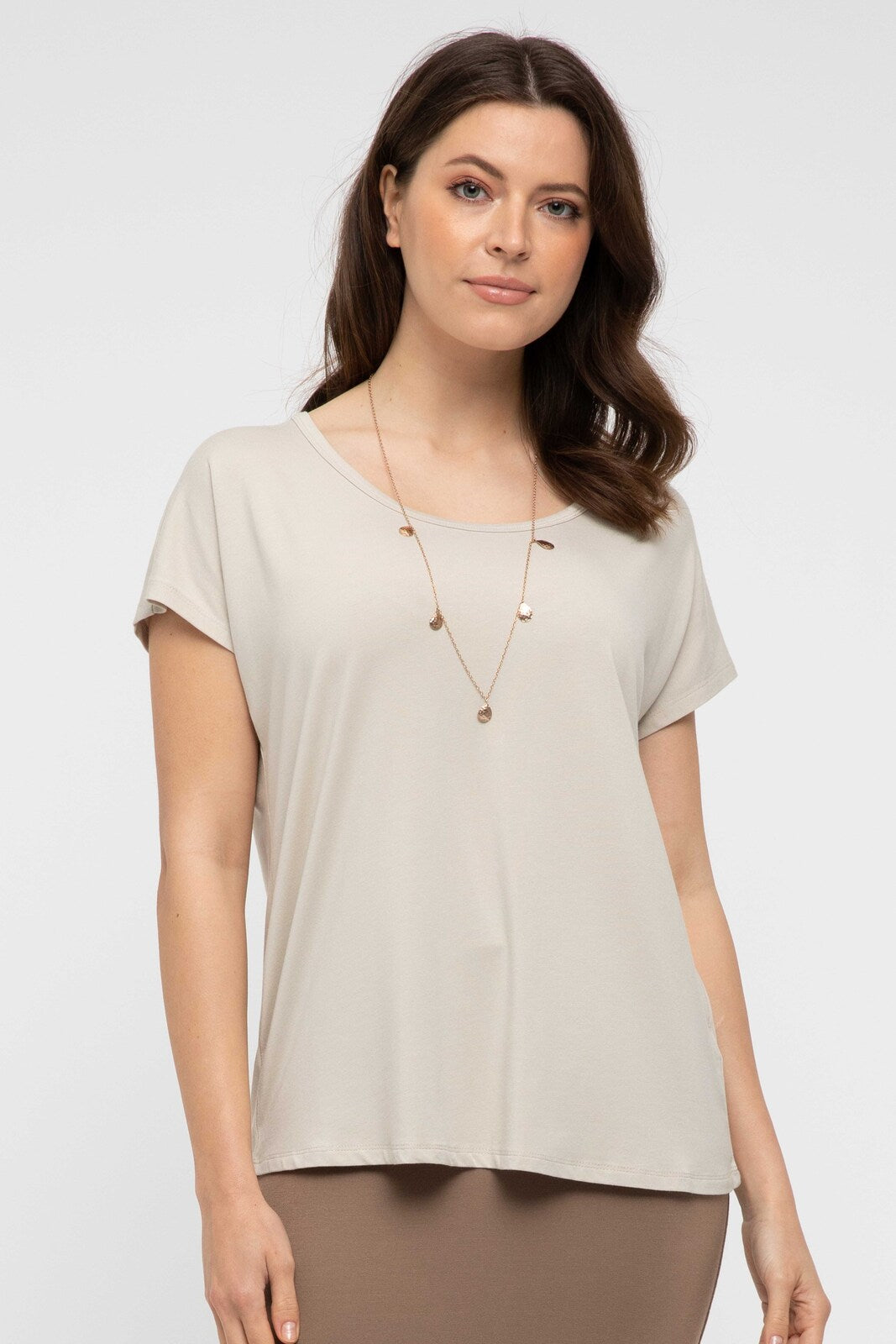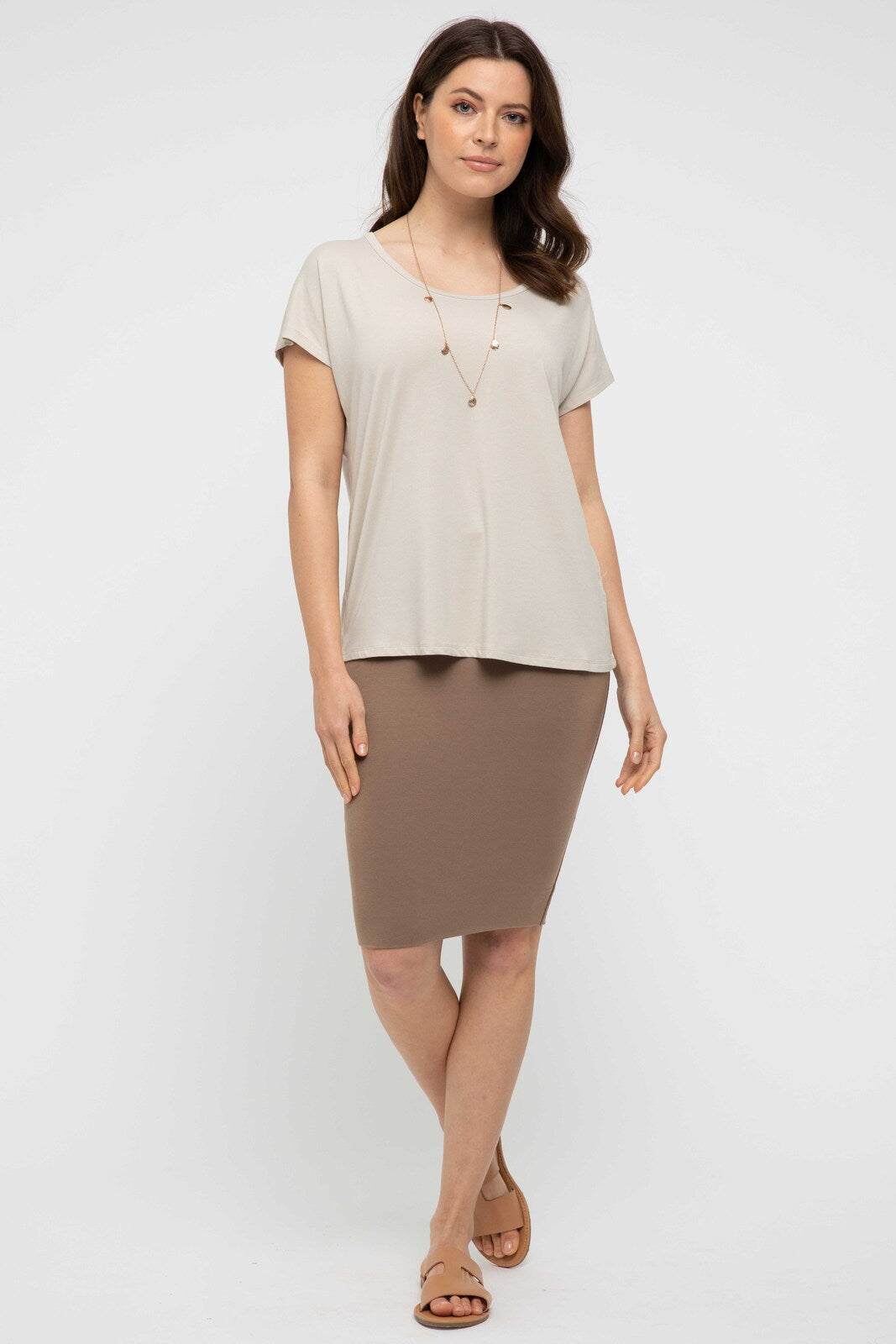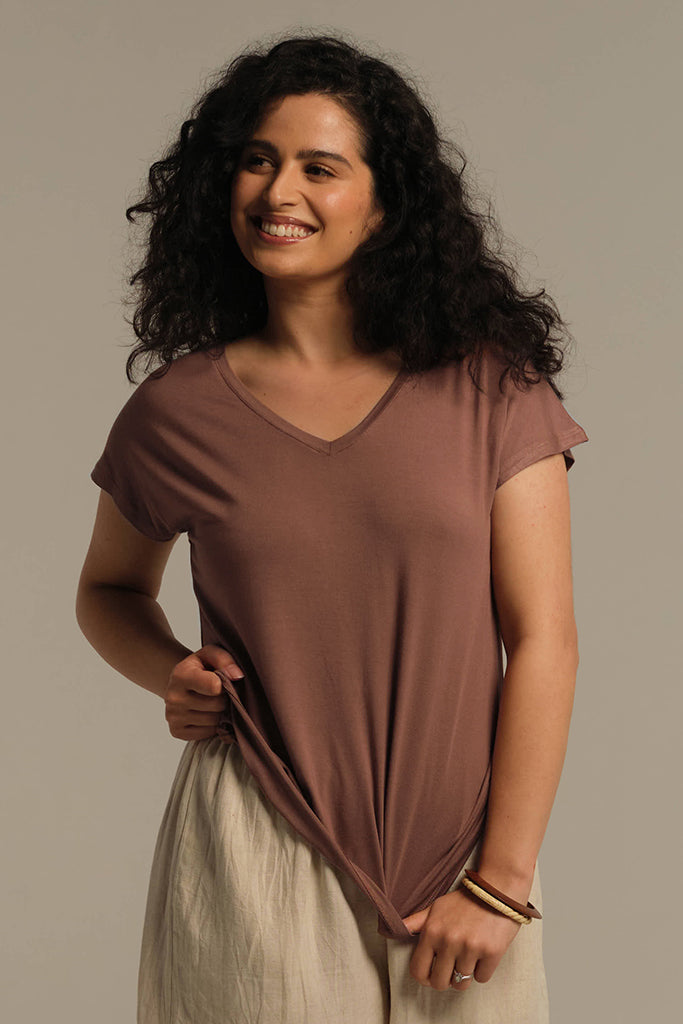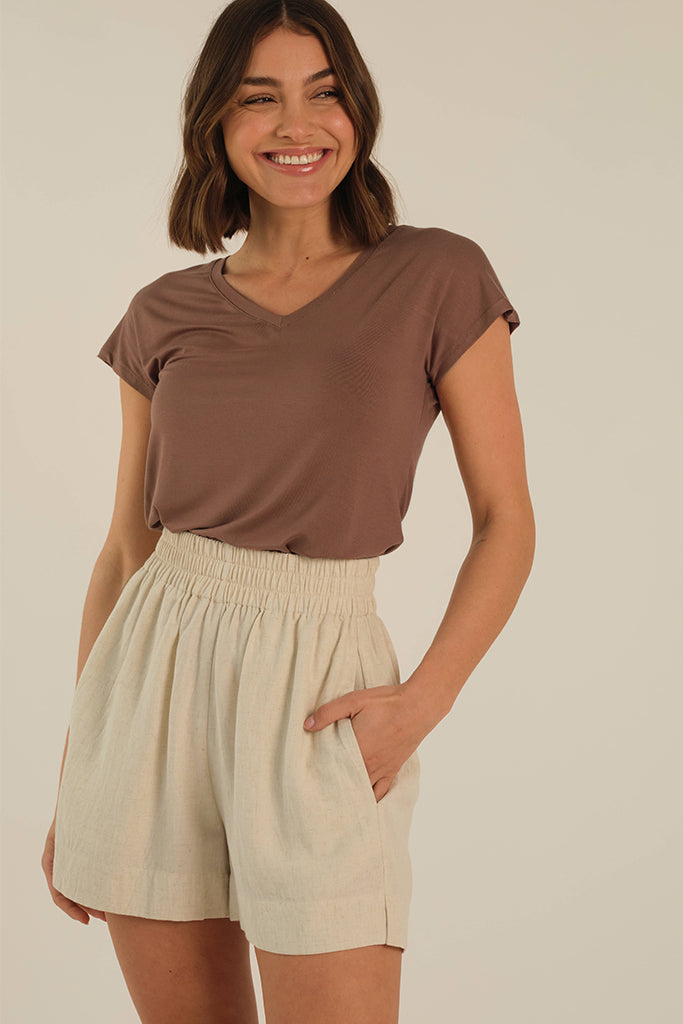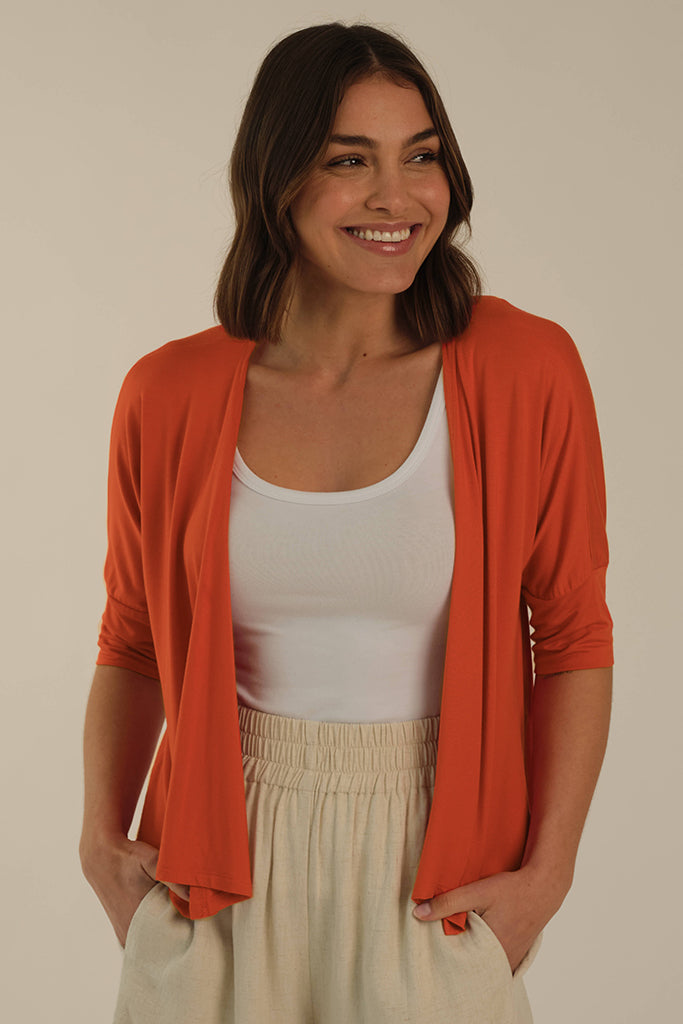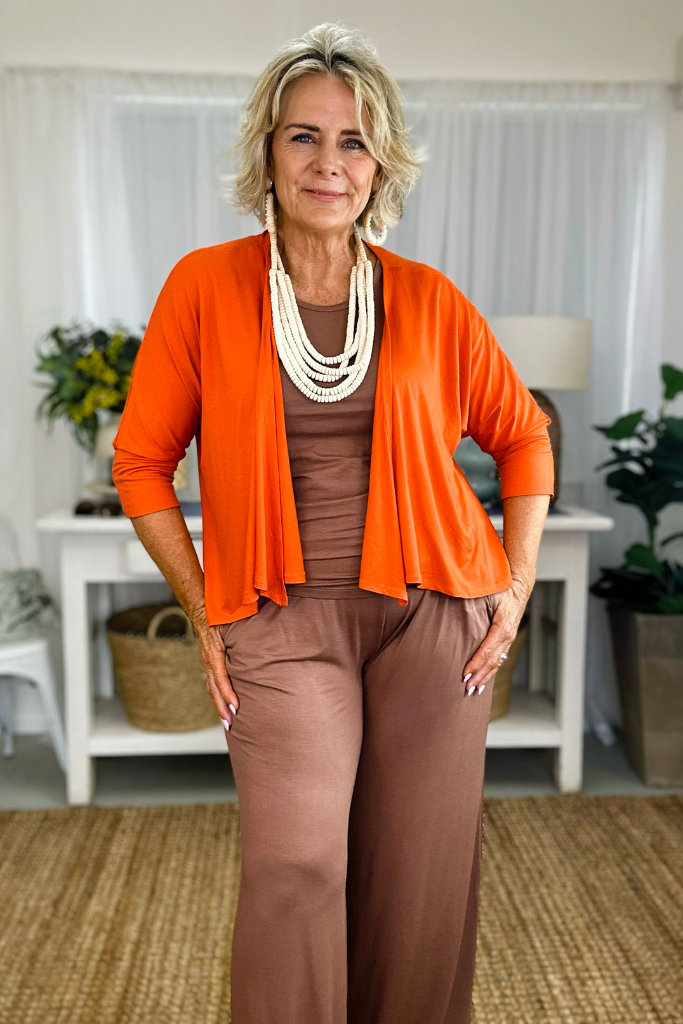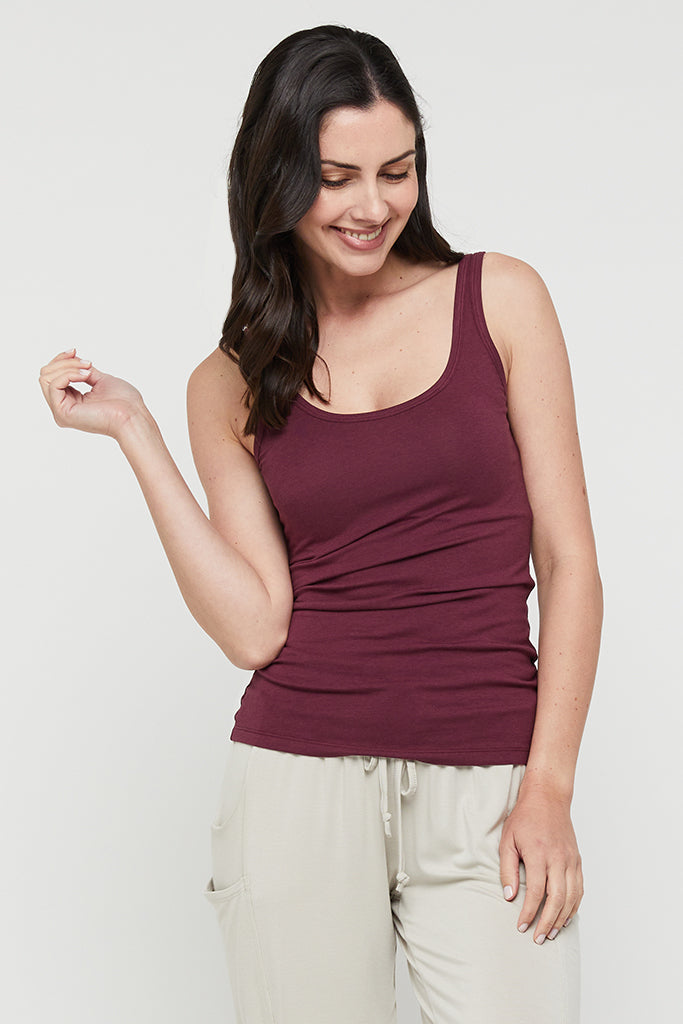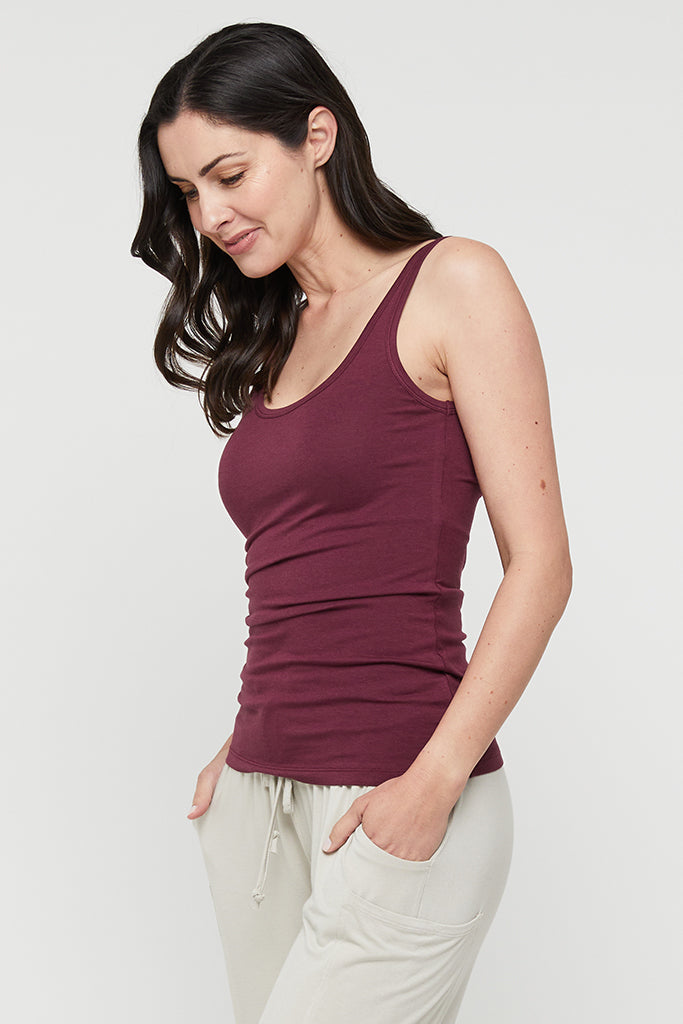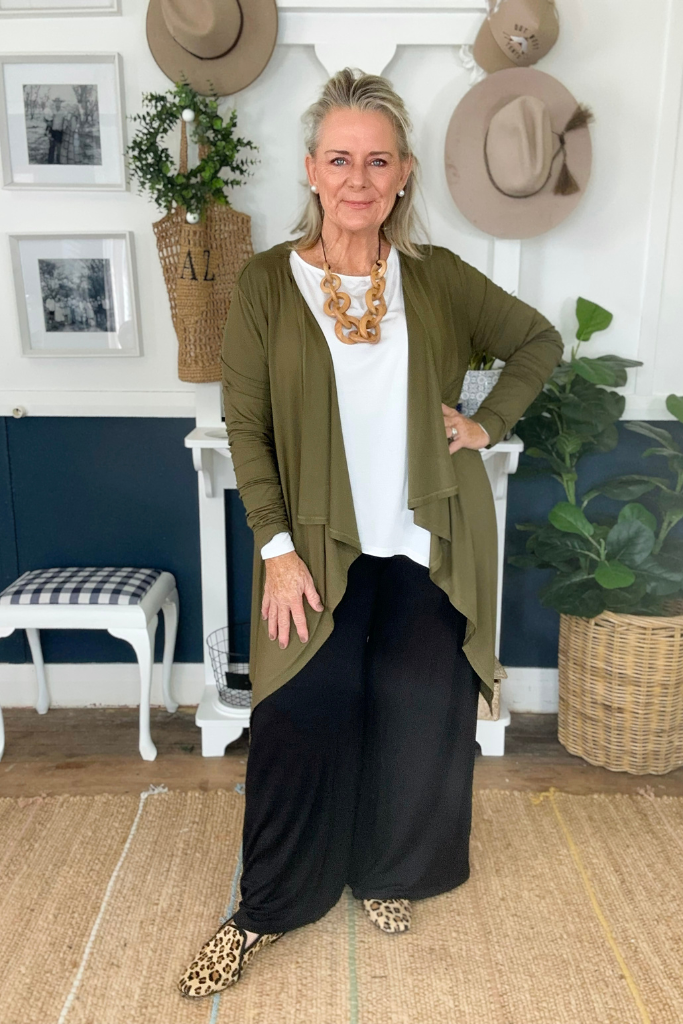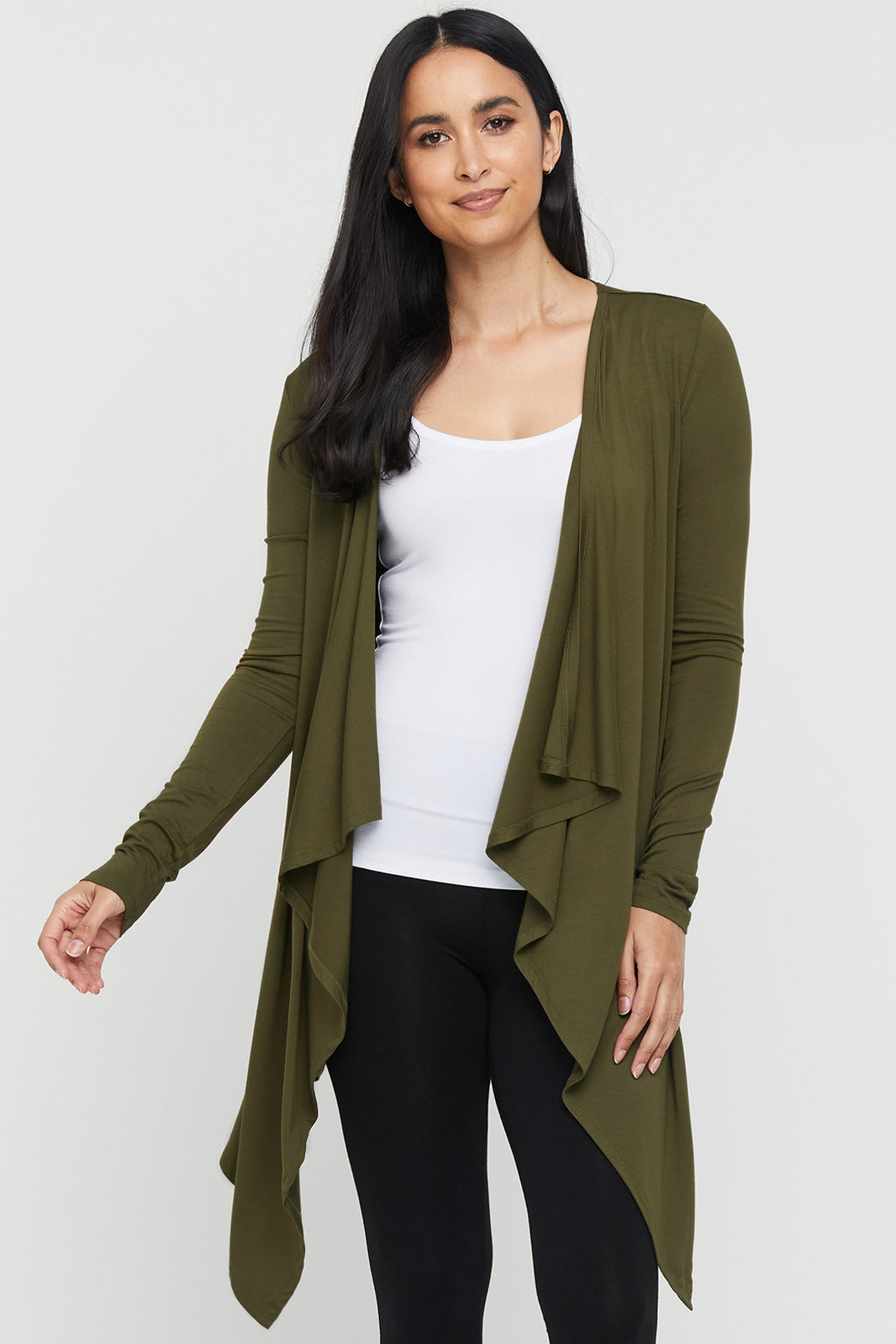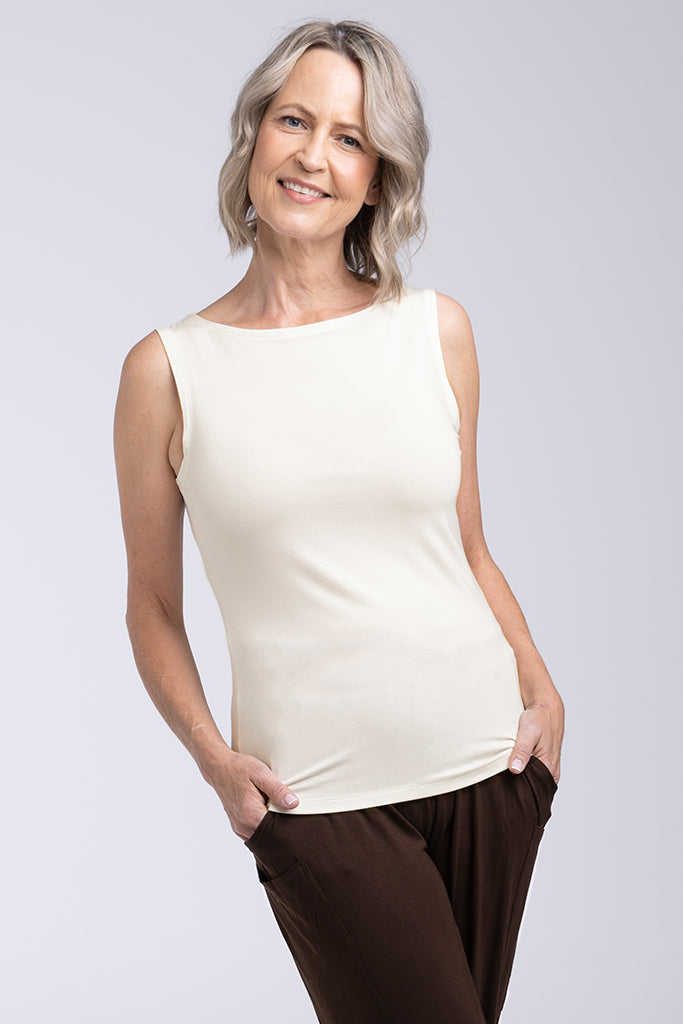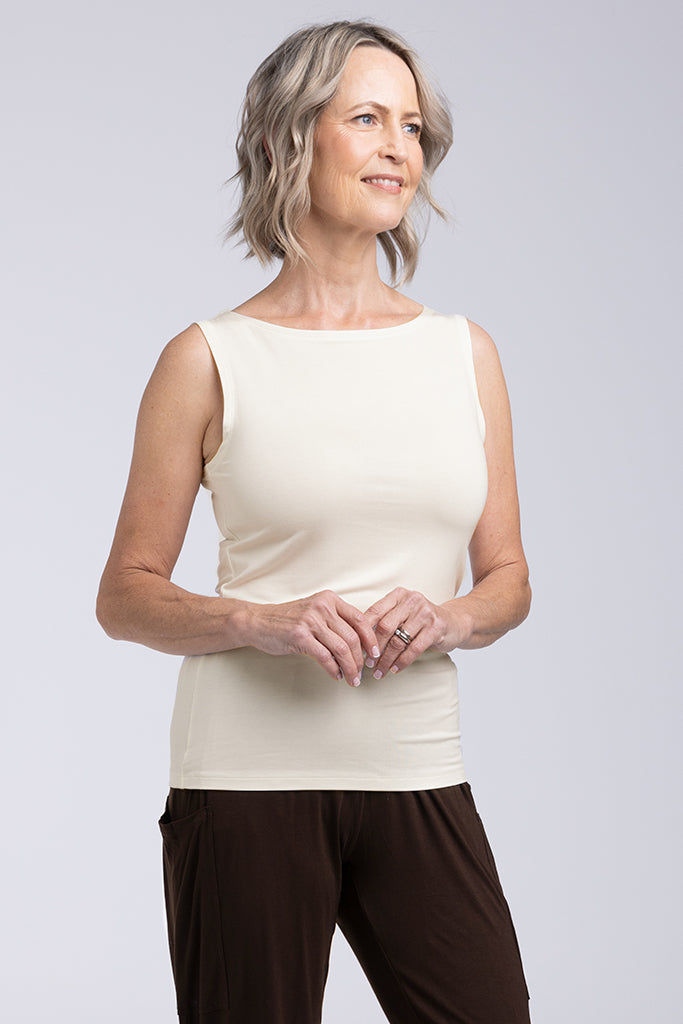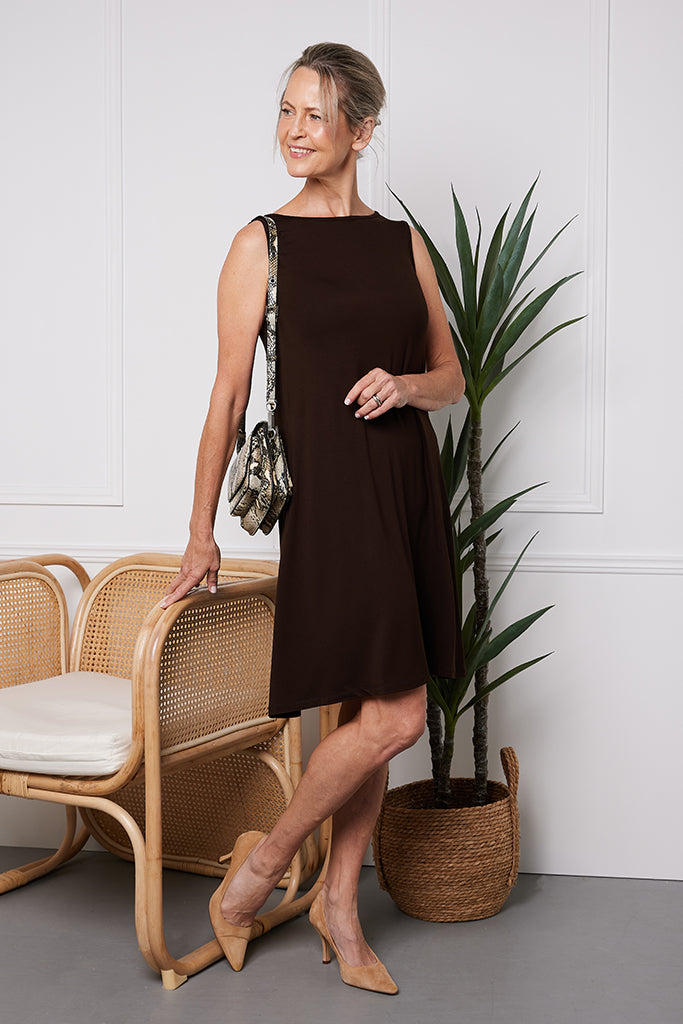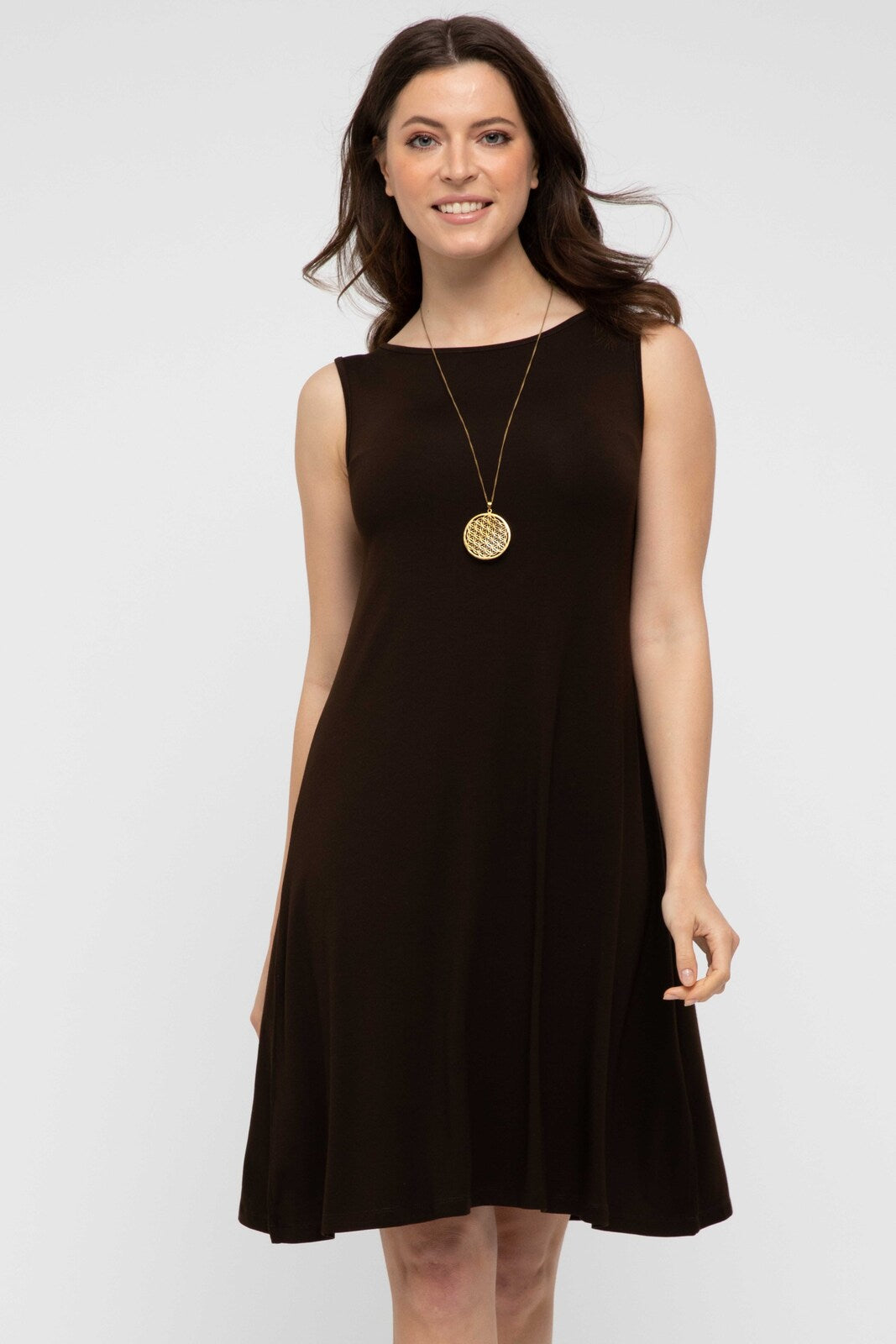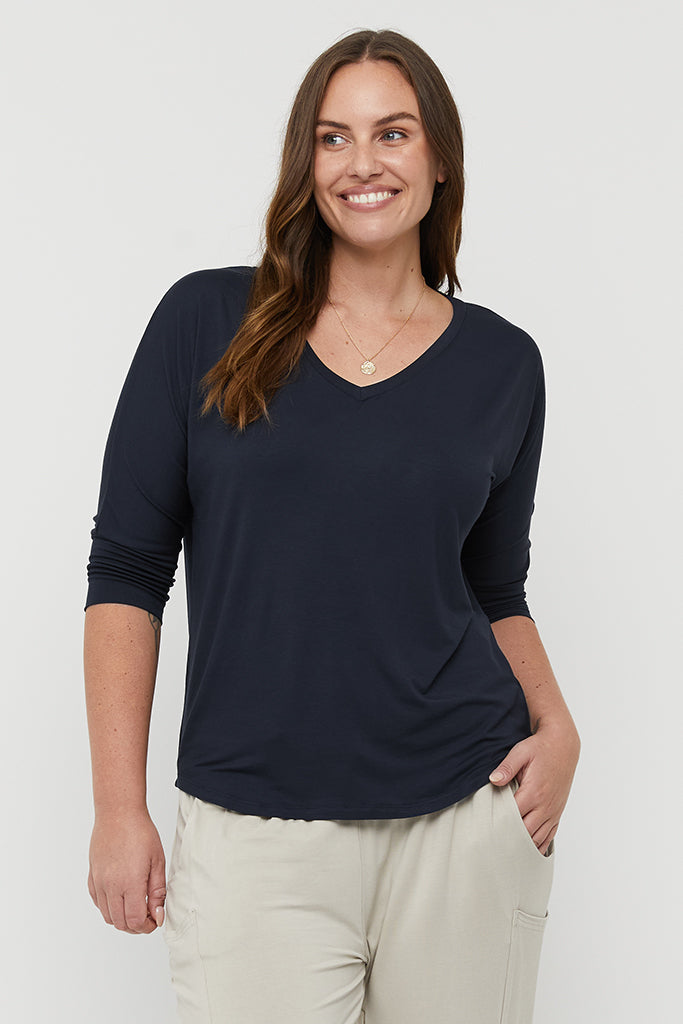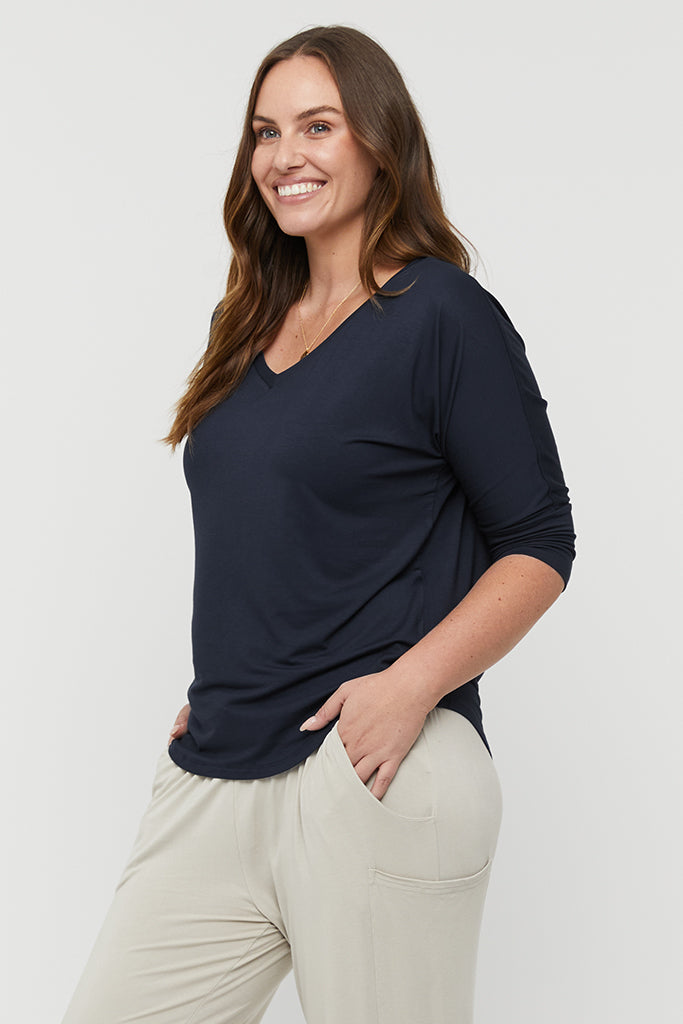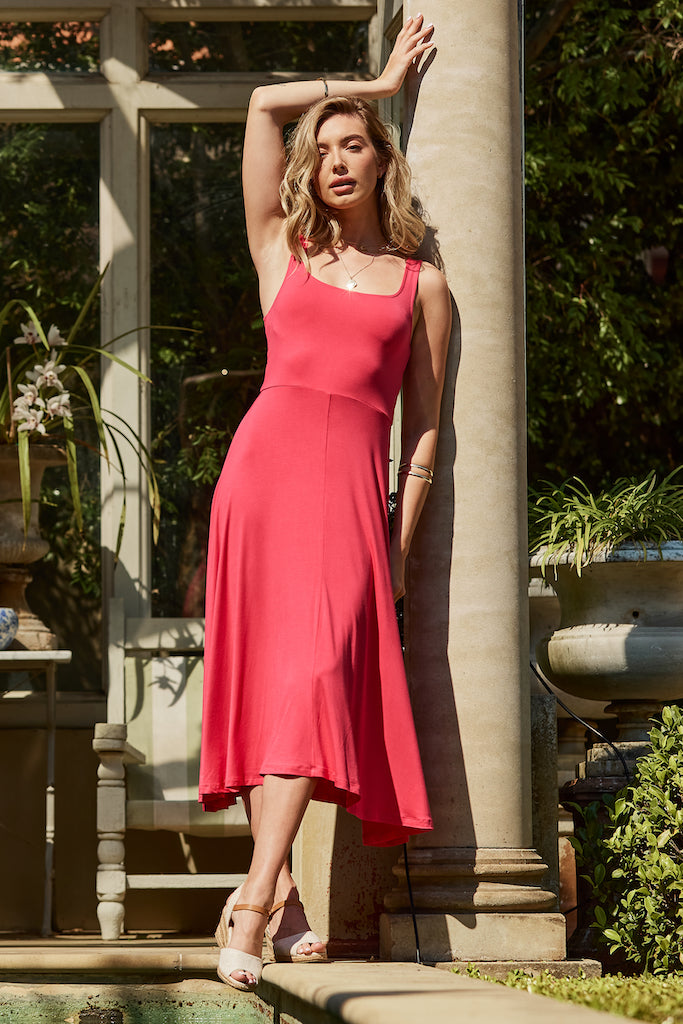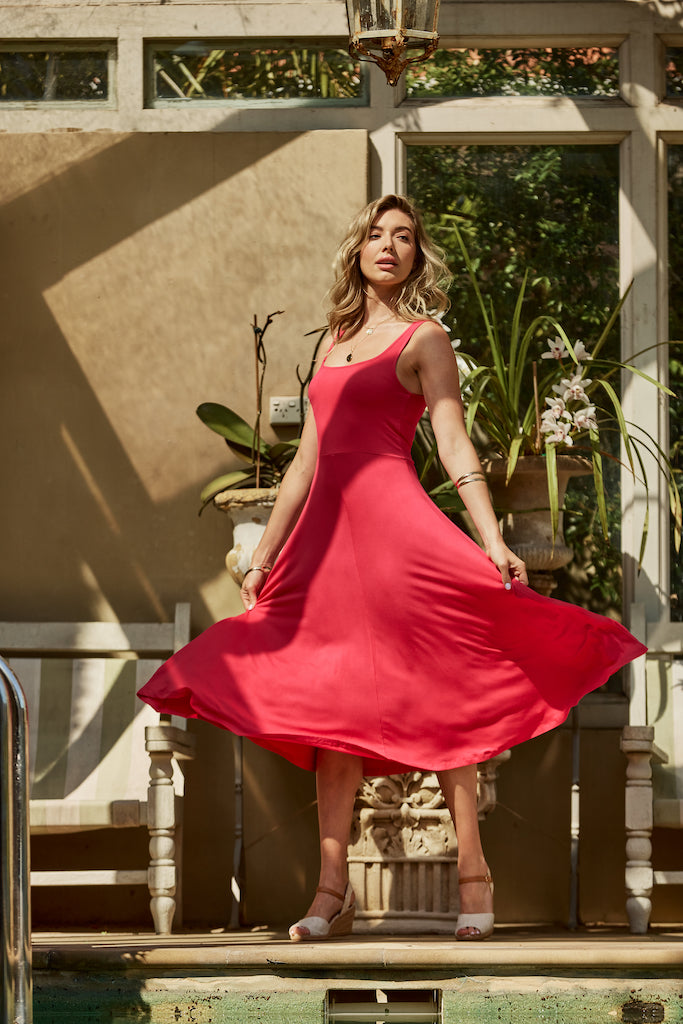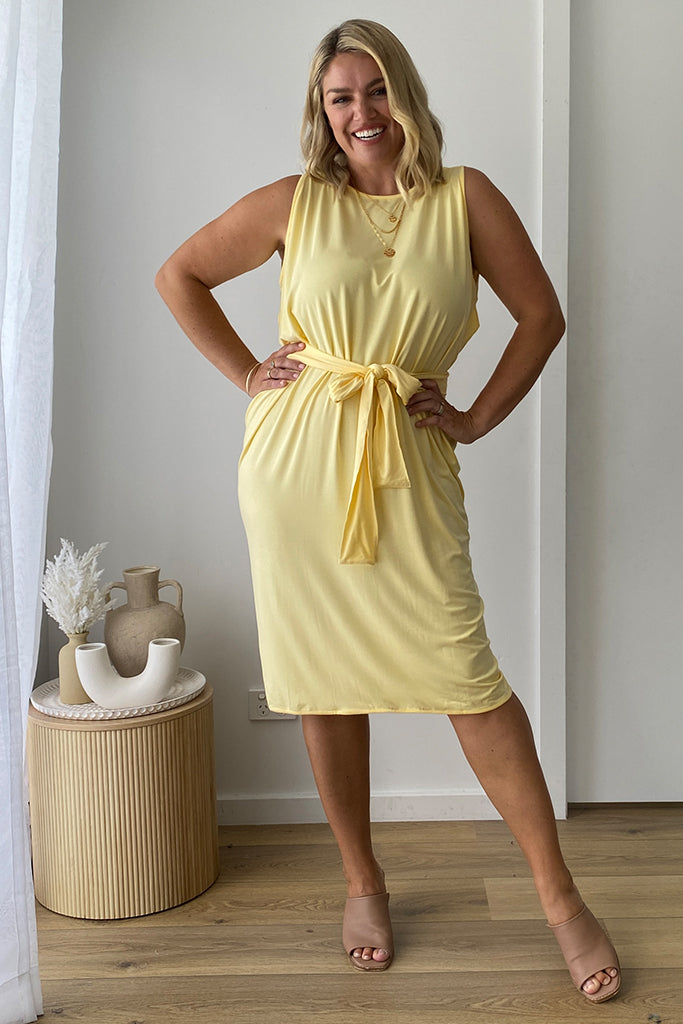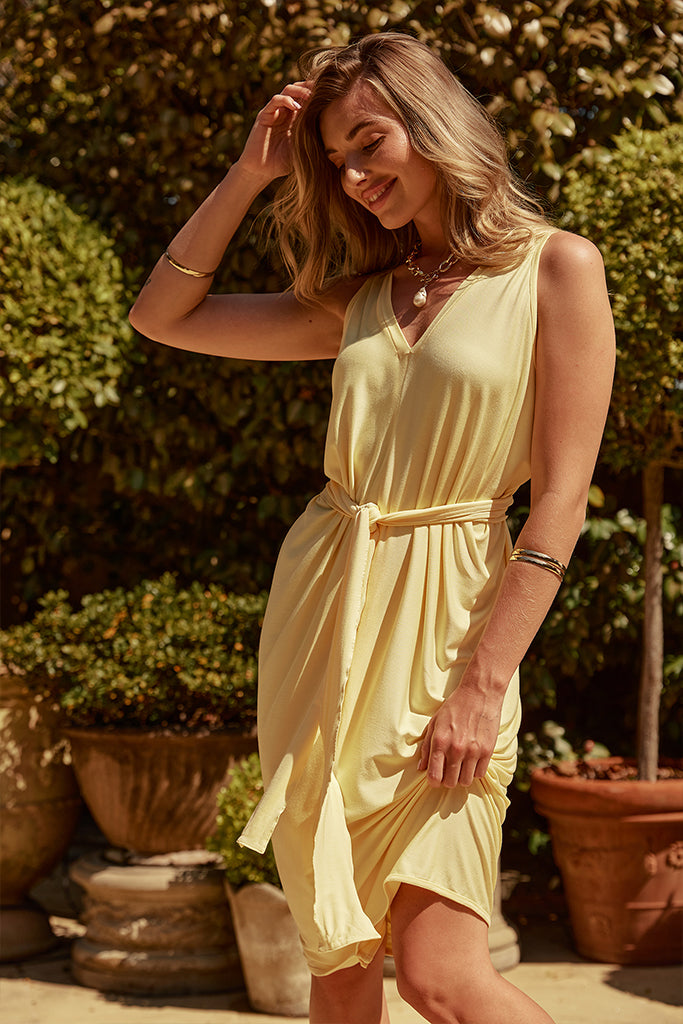A Comprehensive Colour Analysis Guide: Cool VS Warm Skin Undertone
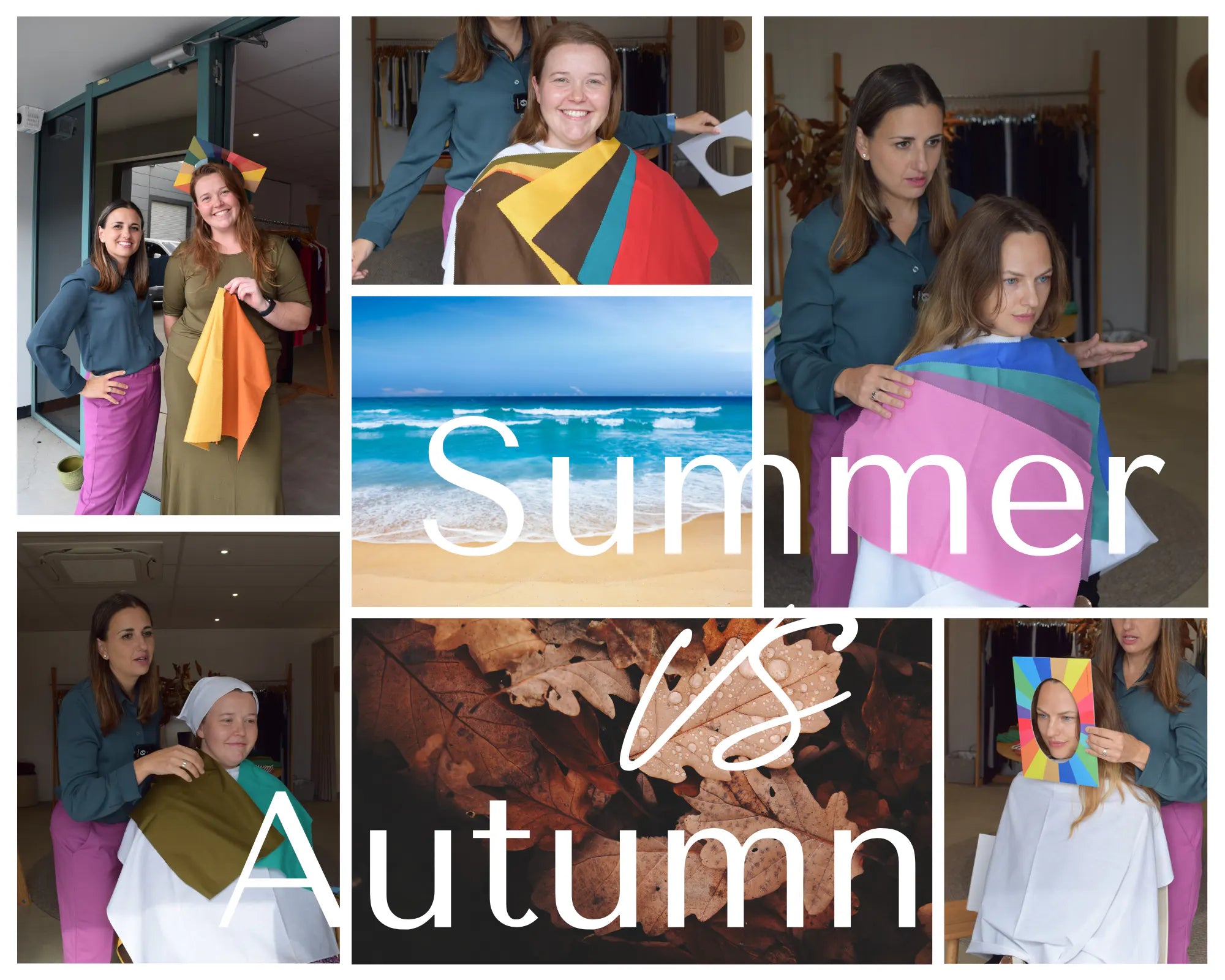
Comparing Cool and Warm skin undertones. Differences, Colour Tips and Tricks, and What to Wear.
As you may know, the Bamboo Body team recently had a blast getting our colours analysed by the fabulous Silvia from Colour Me Coach! We’re excited to dive even deeper into the colourful world of skin undertones with you. If you're curious about colour theory and eager to analyse your skin undertone at home, don't miss our blog here.
Today, we’re comparing the cool and warm skin undertones of our team members, Alana and Daria. We’ll guide you through each step of the colour analysis process, showing how different colours can transform your complexion. By the end, you’ll have the superpower of choosing colours that make you shine!
Step One: Colour Neutralisation
We might look like early 20th-century nurses here, but it's all part of the process! By covering our hair and clothing, we eliminate any distractions. Our faces become a blank canvas, perfectly ready to find the best colour match. This step is essential for accurate colour analysis, making sure only our natural skin tones come into play.
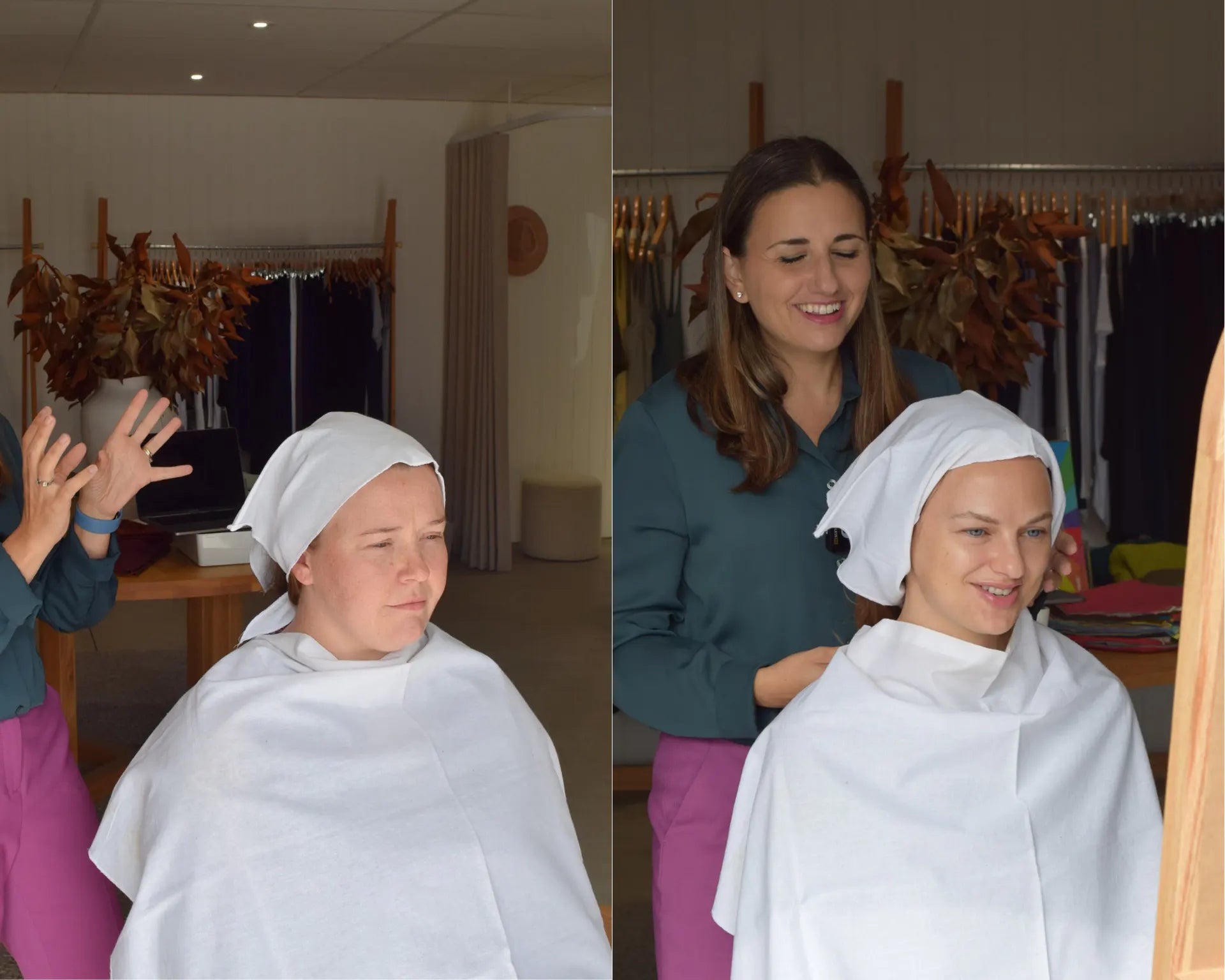
Step Two: Drape Pairs to indicate the undertone
This is the most iconic and well-known trick of colour analysis experts – draping fabrics. By using fabric pairs with similar intensity but contrasting undertones, we can see how different colours interact with our skin. For example, 2 contrasting drape pairs would be raspberry red (cool) vs. tomato red (warm), blush pink (cool) vs. salmon (warm), olive green (warm) vs. emerald green (cool), etc.
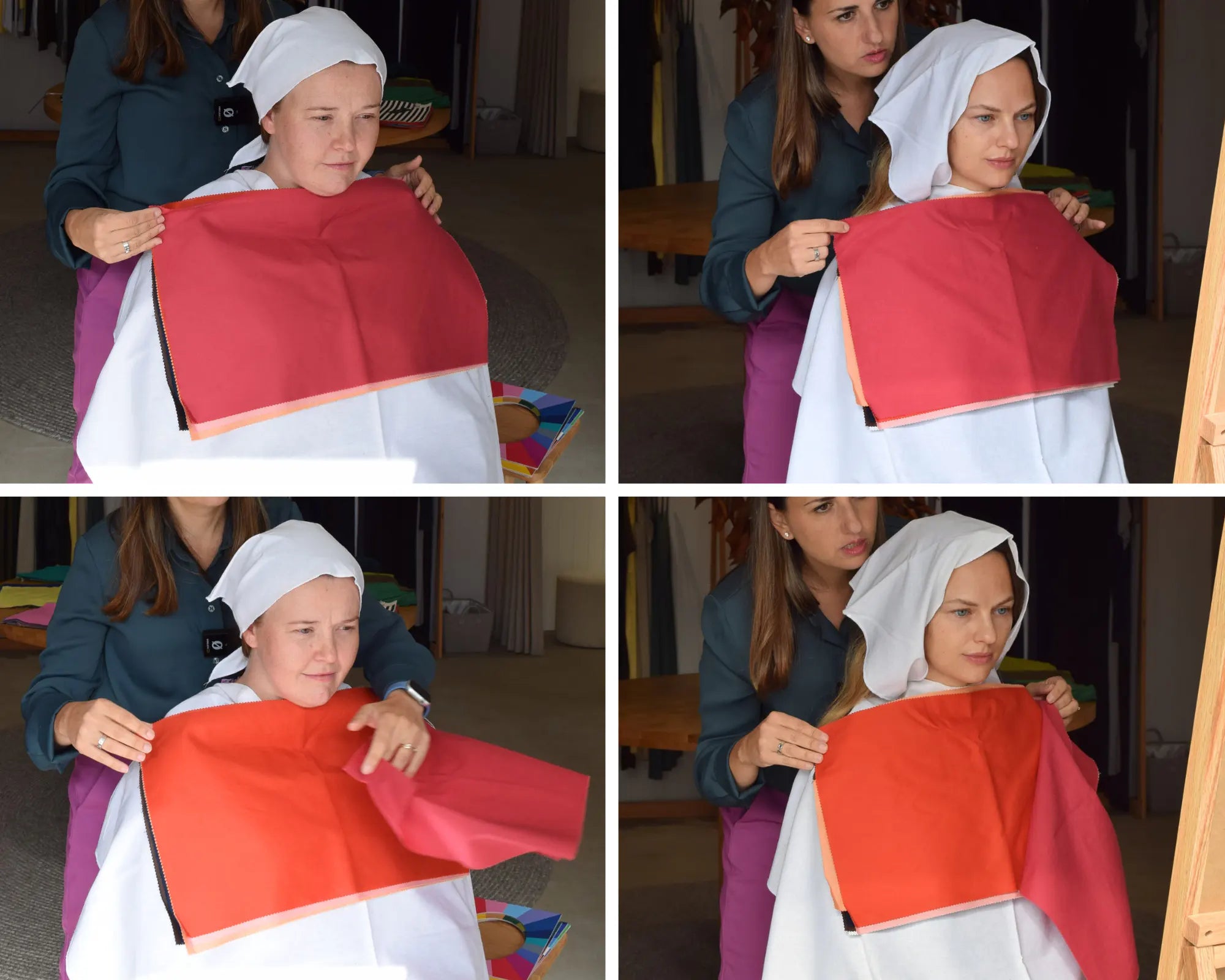
Raspberry red (top) vs Tomato red (bottom)
Observe reactions carefully: a healthy glow indicates a good match, while dullness suggests a mismatch. Starting with reds is a great approach because red drapes can clearly show how the complexion reacts to cool and warm tones. This method reveals which undertones make your complexion glow and which ones don’t.
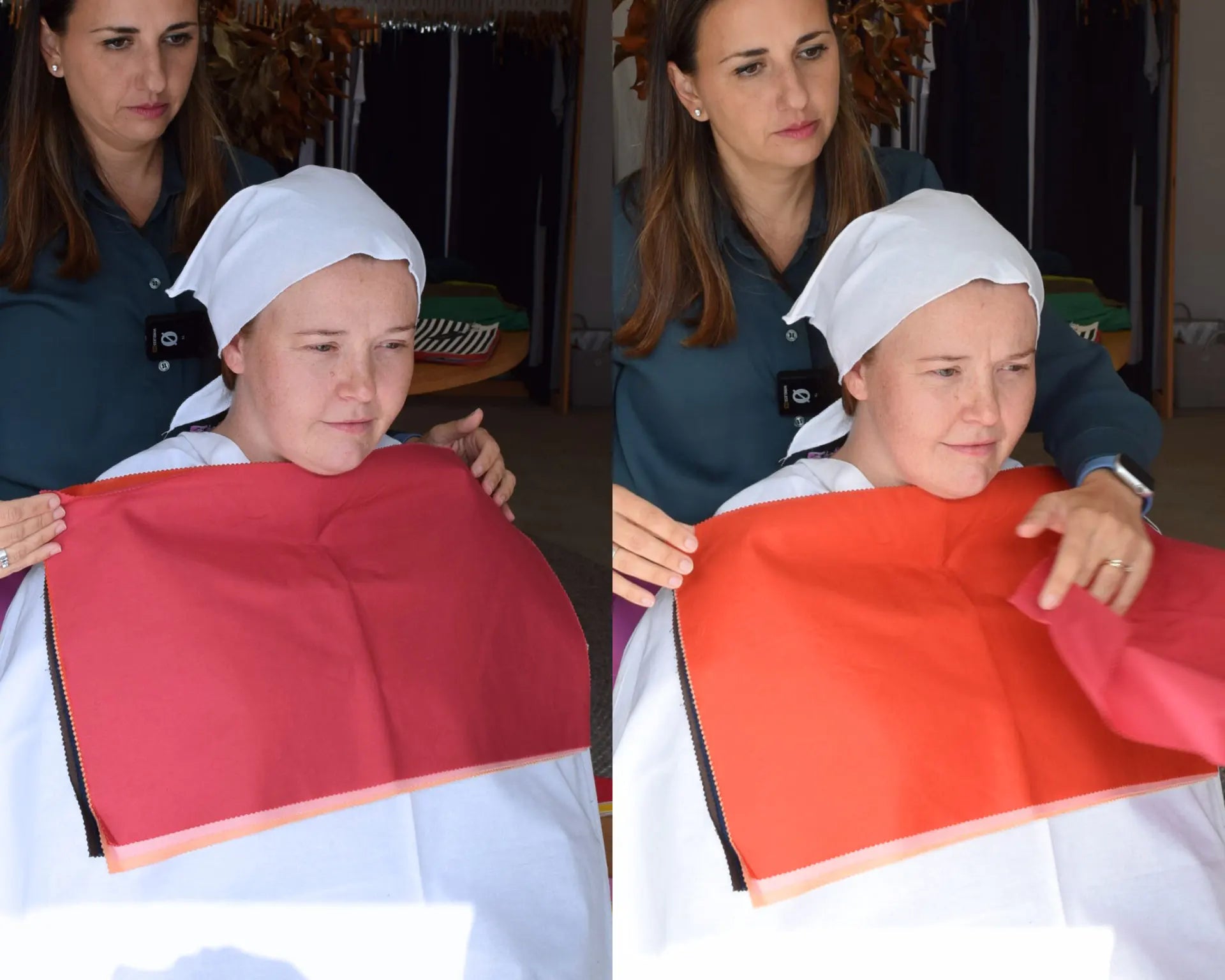
The cool red (left picture) makes Alana's complexion look a bit flat, while the warm red (right picture) brings a beautiful glow and vividness to her skin.
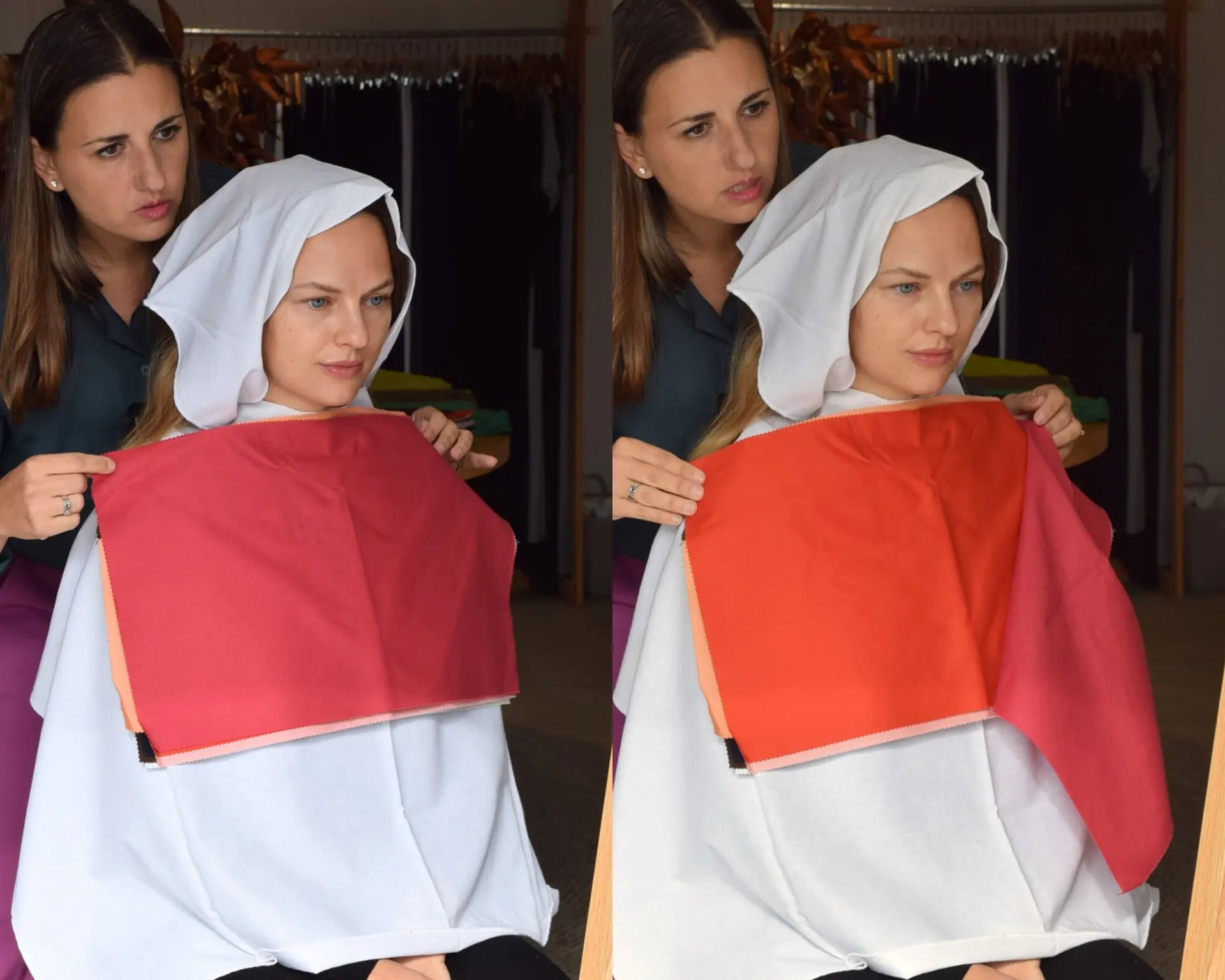
Daria's situation is completely opposite. The cool raspberry red (left picture) makes her skin bright and glowing, while the warm tomato red (right picture) brings an unhealthy yellowish undertone to her complexion.
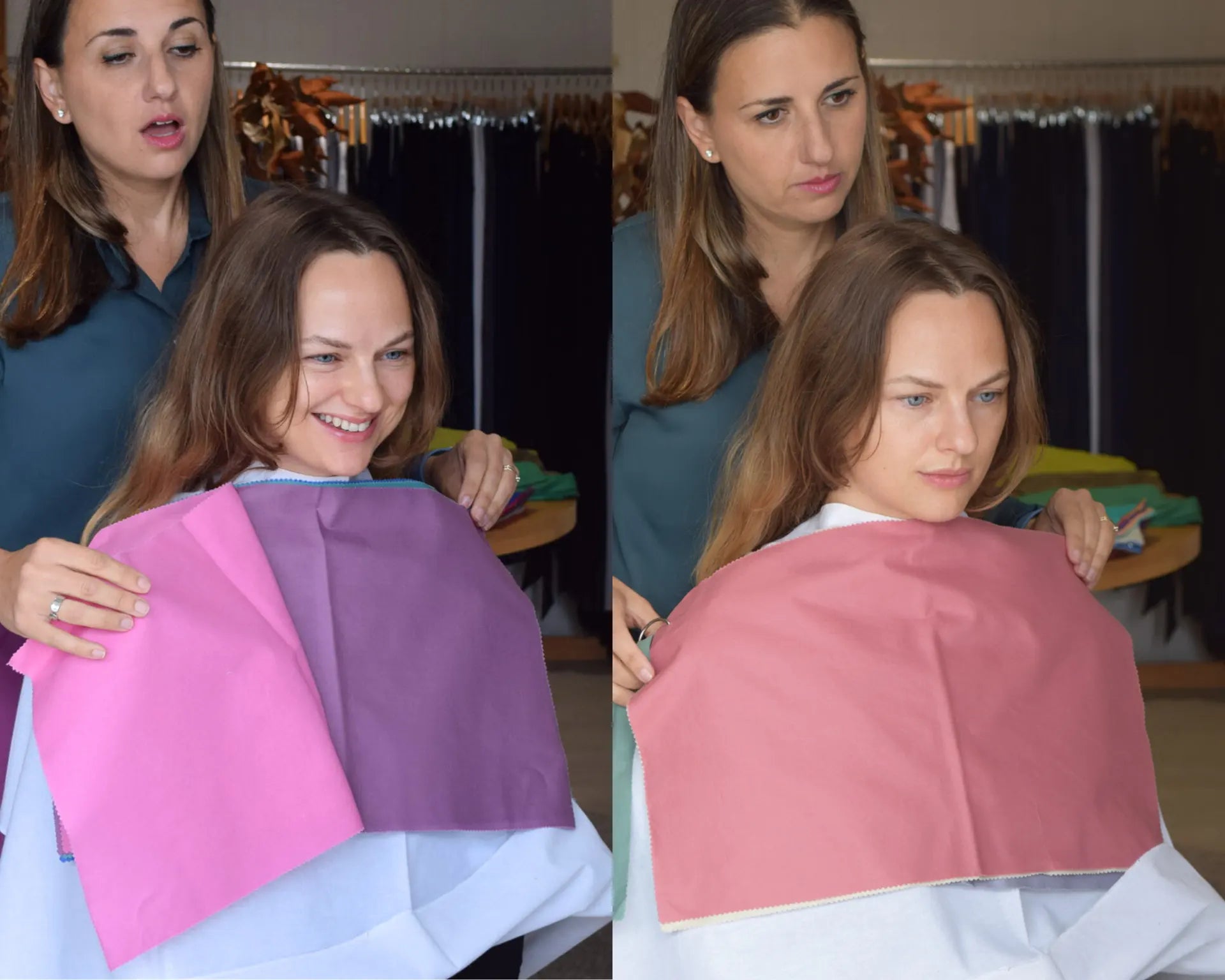
The cool pink and lilac shades vs. the warm pink just confirm that Daria's skin undertone is cool. Can you see the difference?
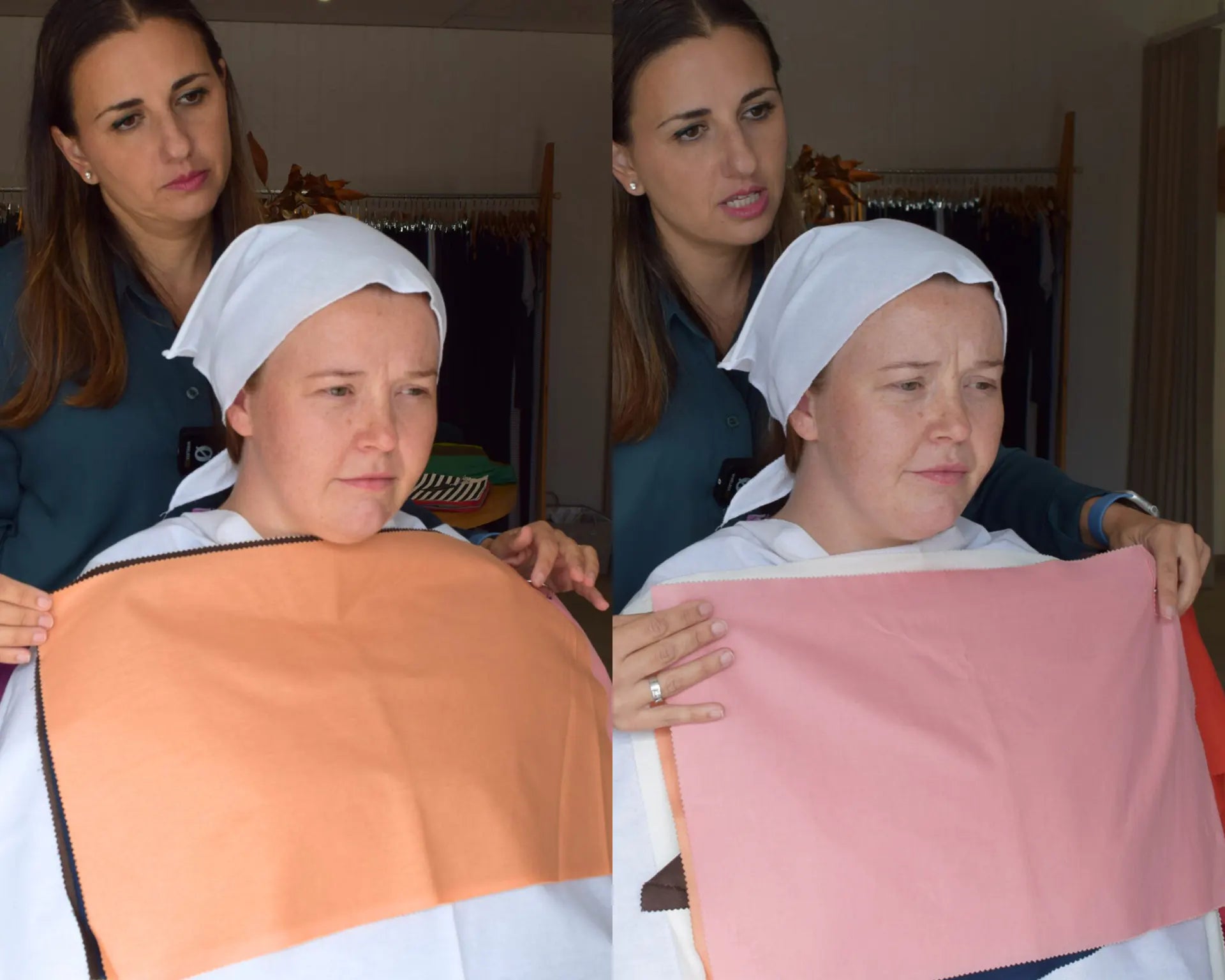
Alana's skin looks more radiant in the warm salmon pink (left picture) rather than the cooler version of pink. The difference might be subtle, but that's just the beginning of the process!
Step Three: Gold vs Silver
If the drapes are inconclusive, we bring in the metallics for the final confirmation. Silver and gold drapes help pinpoint your undertone with precision. Silver reflects a cool undertone, while gold highlights a warm undertone.
As a bonus, this step also hints at your ideal jewellery metal! If you have a cool skin tone, silver and white gold will look amazing on you. For those with a warm skin tone, gold is your best friend, bringing out a beautiful natural glow.
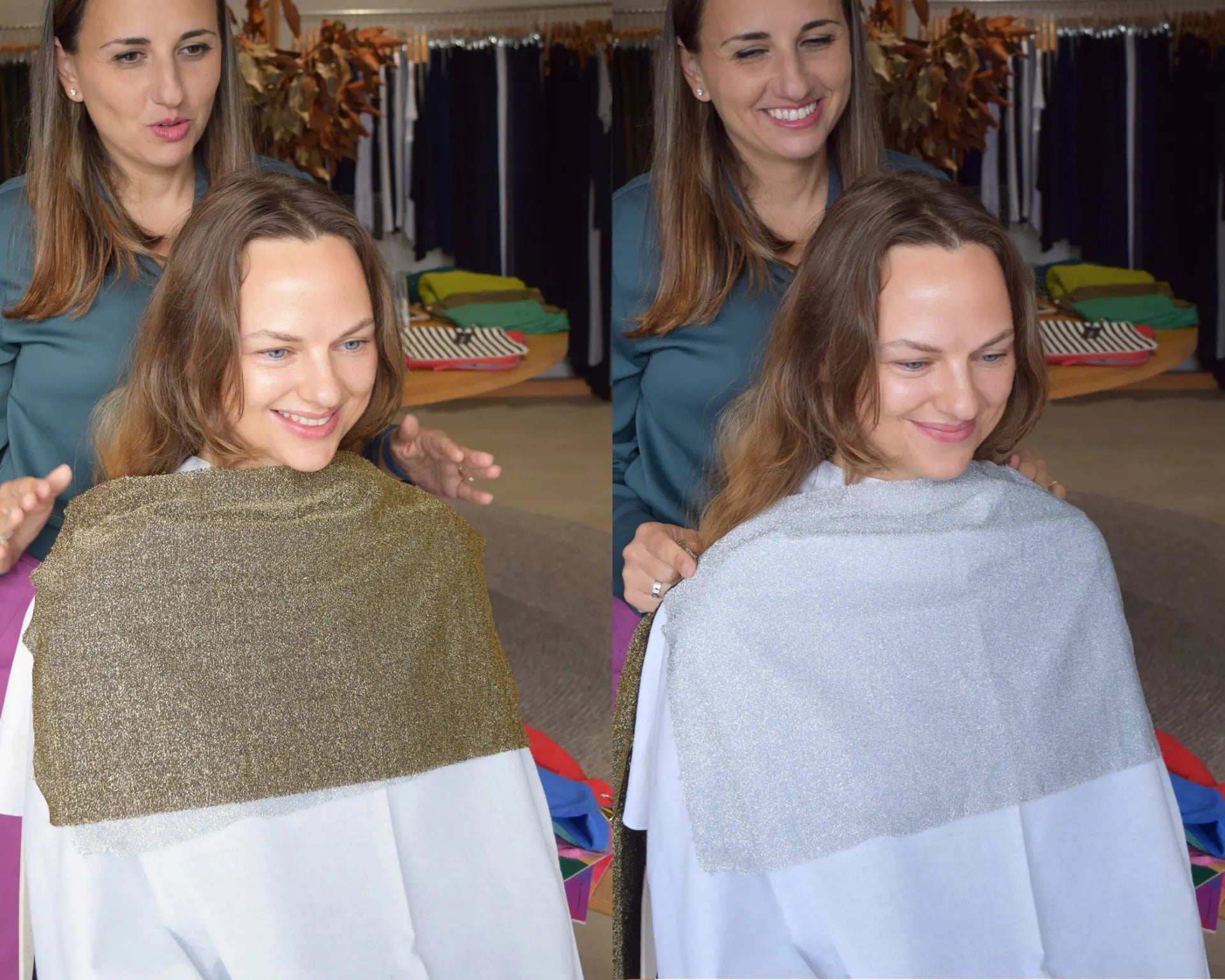
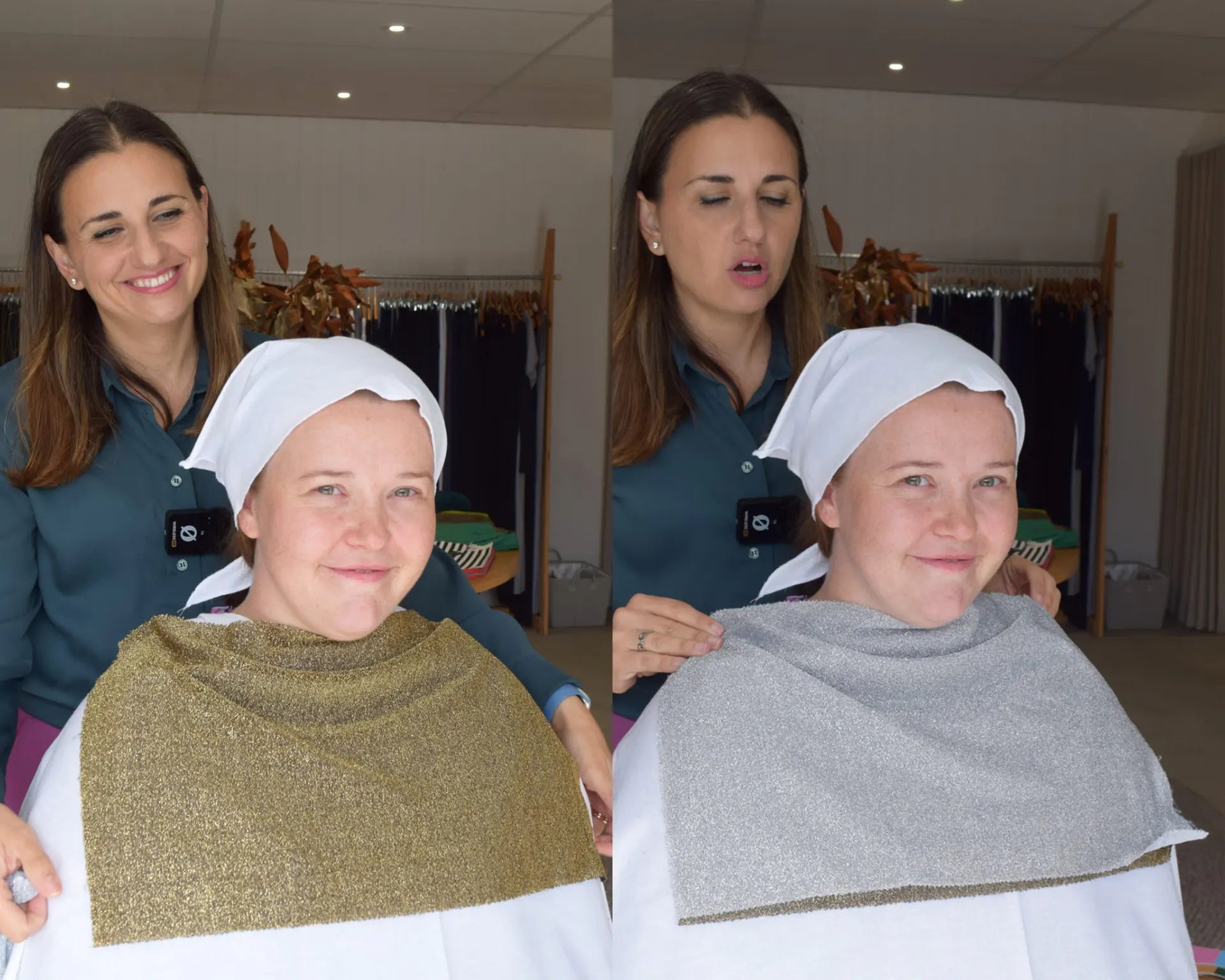
The final verdict is in: Daria’s skin undertone is cool, and Alana’s is warm.
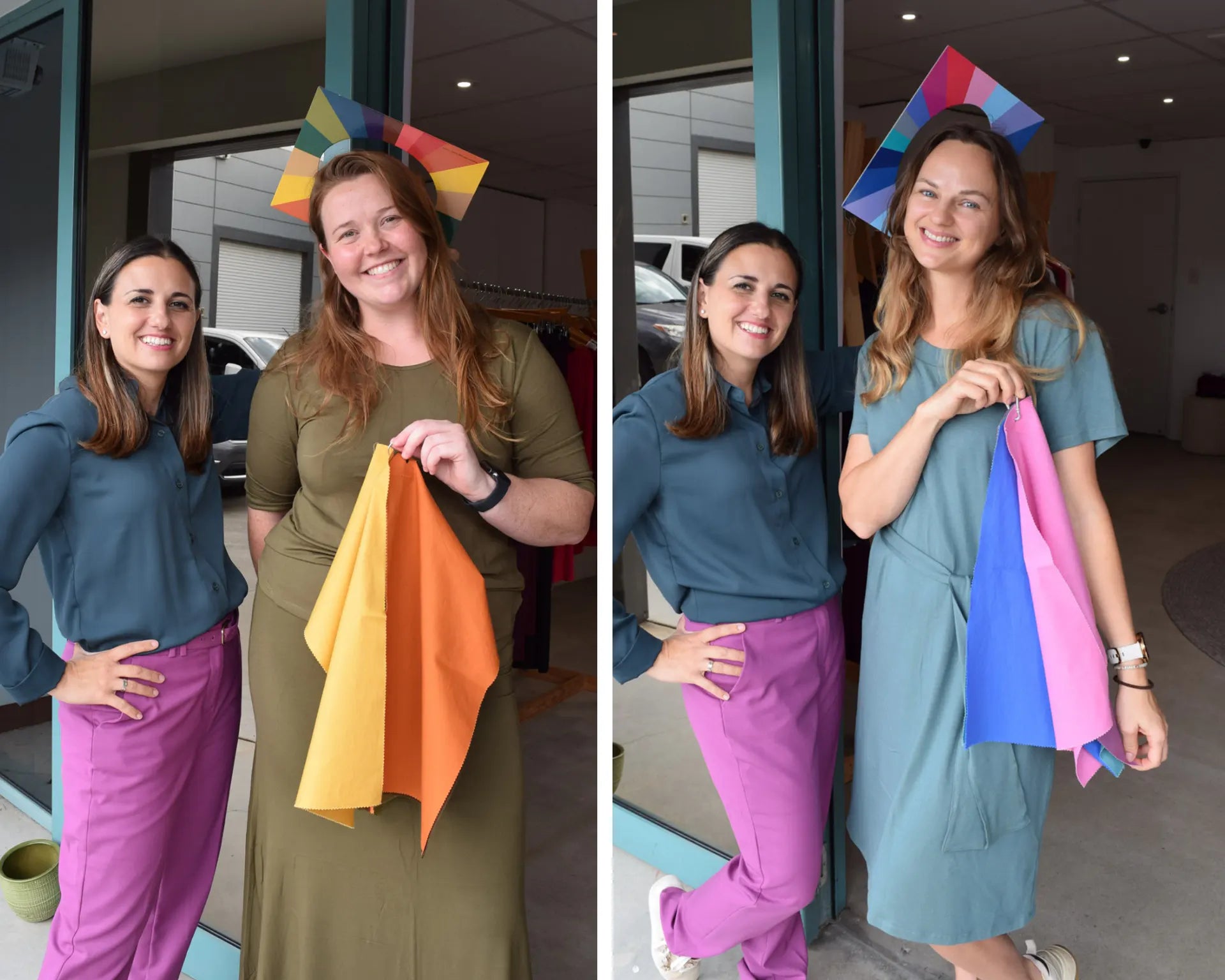
Colour Analysis Tips and Tricks
Here are some tips and tricks to help you achieve the best results from your colour analysis, especially if you do it yourself at home:
Lighting: Natural light is best for this test. It provides the most accurate reflection of how colours interact with your skin.
Clean Face: Avoid makeup and tan for a more accurate result. You want your natural skin tone to be the star of the show.
Colour Seasons: There are four colour analysis seasons: spring and autumn are warm, while summer and winter are cool. By the process of elimination, once it is established that the undertone is cool, we can definitively exclude autumn and spring, and vice versa. Read more about colour seasons here.
Think Tops, Not Bottoms: The good news is when we speak about the best colours for your skin undertone, we mean tops, not bottoms. Tops sit close to your face and affect its undertone. When it comes to choosing the colour of your bottoms, you can go for whatever colour you like, because it has zero influence on your skin undertone!
Makeup: Once you determine your undertone, shopping for makeup becomes a breeze! Opt for cool colours in lipsticks, blush, and foundations if you have a cool skin tone. For warm undertones, go for warmer colour options.
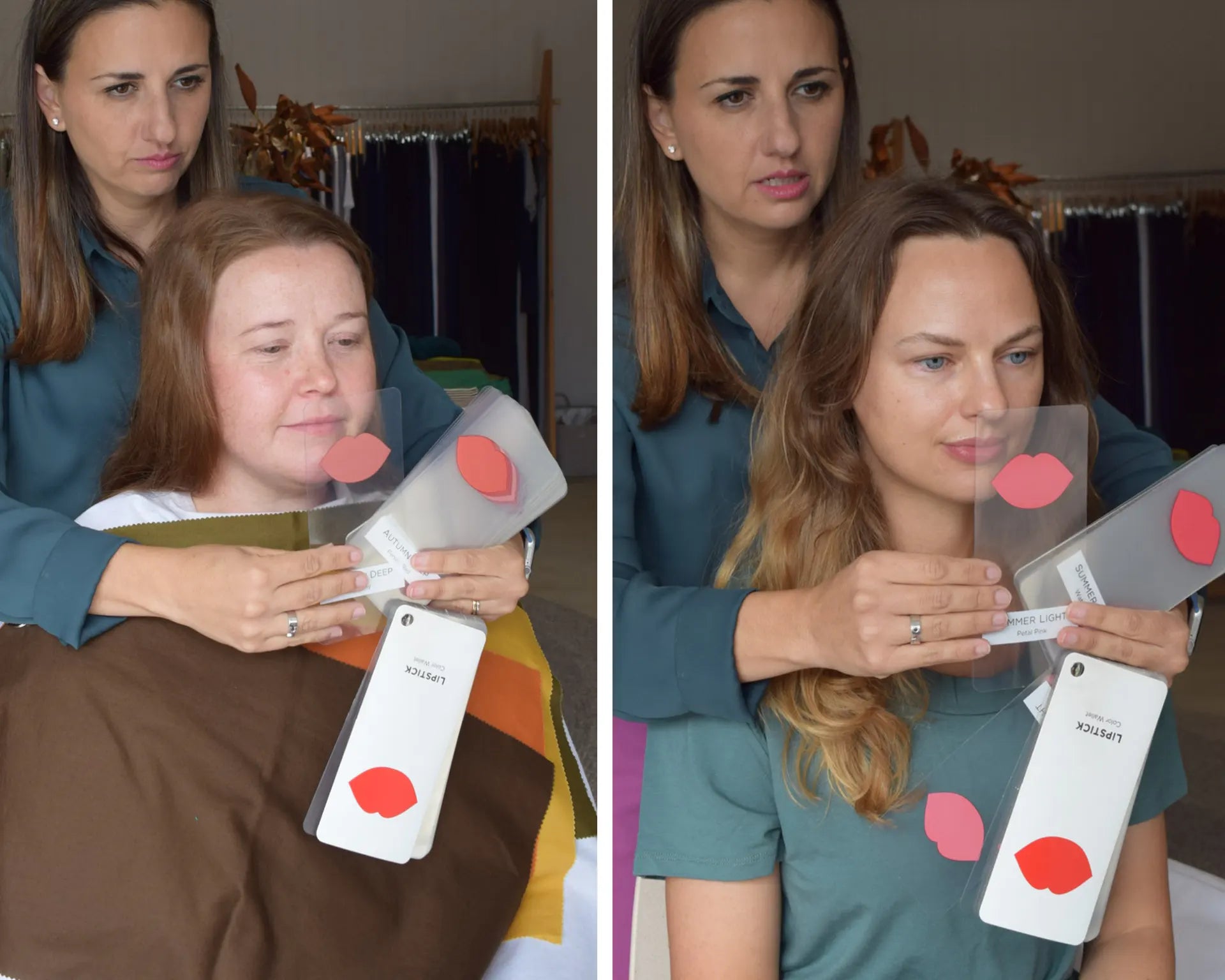
Bamboo Body Collection for Warm and Cool Undertones
At Bamboo Body, we create our collections with colours that suit both skin undertones in mind. Whether you're cool or warm, we've got stunning options to enhance your natural beauty.
Colours For Warm Skin Undertone
To complement your warm skin undertone, choose clothes in warm hues, especially for tops and dresses. To determine if a colour is warm or cool, try to spot the yellow undertone (warm) or blue undertone (cool) in each colour.
In the Bamboo Body Collection, we offer many warm-based colours, such as Olive Green, Burgundy, Ivory, Chocolate, and Teal. Pick a colour you like or mix and match them to create a warm-based colour combo for added depth. Shop all warm colours here.
Colours for warm skin undertone
Eadie Top - Bone
9 colours available
Belle V Neck Tee - Mousse
7 colours available
Bamboo Scoop Singlet - Burgundy
10 colours available
Waterfall Cardigan - Dark Olive
15 colours available
Bamboo Shell Top - Ivory
12 colours available
Adele Dress - Chocolate
6 colours available
Colours for Cool Skin Undertone
Ladies with cool skin undertones, we have some amazing cool hues for you, too! Choose from a range of calm colours like Storm, Forest, Navy, and Dark Navy, or go for bright and bold shades like Magenta or Plum. Shop cool colour palette here.
Colours for cool skin undertone
Dolman Sleeve Top - Dark Navy
11 colours available
Melanie Dress - Magenta
5 colours available
Reversi Dress - Limoncello
2 colours available
Blog posts

Discover Bamboo Body’s cruise wear collection designed for women who love comfort and style. Whether it’s relaxed daytime outfits or polished evening looks, find everything you need to feel confide...
Read more
Discover our latest collection featuring Natalie Angel's (LMTBYB) top picks! From breezy dresses to summer travel sets, enjoy two new beautiful fabrics that will keep you comfortable and stylish al...
Read more

